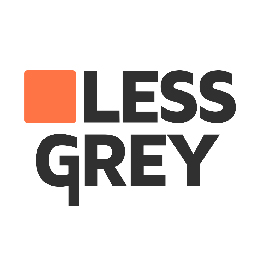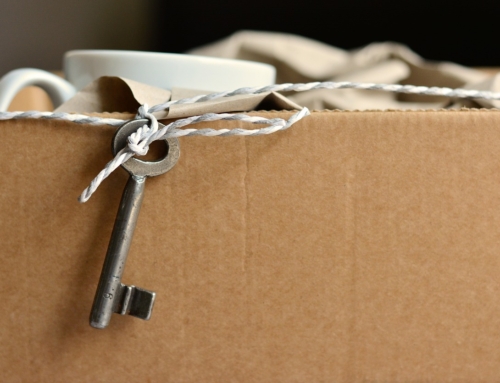How to start using the iOSS scheme for non-EU sellers to customers in EU
Avoid having to register and pay VAT in every EU country where you sell your products. Is your company making B2C sales of goods to consumers in EU countries? And are these goods shipped from a non-EU country directly to the EU customer Then you probably know there are some new VAT rules to take into account as of 1 July 2021. But maybe you've also heard of the iOSS system that can make things easier for you. Let's look at what this system can do for you.
The iOSS scheme in a nutshell
The iOSS scheme allows for non-EU companies selling low value goods (up to €150) to consumers in the EU, to register and pay VAT in only one EU member state, instead of in all member states it's selling to. So no registration, and paying and monthly or quarterly reporting obligations in up to 27 states.
To do that, your company needs to appoint a (one) VAT intermediary in an EU member state of your choice, who will report all B2C sales and the VAT due on these sales on your behalf. The reporting and the payment of VAT is done in the EU country of your intermediary, even if you sell goods to people in other EU countries.
Another advantage with iOSS is that upon importing your goods, you are exempt from VAT on importation or customs duties.
There is even more simplification: if you choose to sell your products via an intermediary platform such as Amazon, if the requirements are met, you won't have to collect VAT at all.
The use of the iOSS scheme is not mandatory; you are free to choose if the iOSS is the best solution for you. But to be clear, if you choose not to apply the iOSS scheme, or you're not allowed to, you'll have to register and pay VAT in every EU country where your customers are.
Let's look more in depth at this iOSS opportunity in a quick and simple way.
What are the main effects of using the iOSS scheme?
When you start using the iOSS system, there are a few changes and benefits to look forward to.
- You charge and collect VAT at the time of the sale, directly in your webshop. You charge the VAT of the EU country where your customer is located;
- You pay the pre-collected VAT in one single country, instead of in all countries where your customers are located;
- You will be exempt from VAT on importation and customs upon arrival and importation into the EU;
- If you sell via an online platform or marketplace such as Amazon, you likely won't have to charge and pay VAT at all.
Prerequisites for applying the iOSS scheme
You can't apply the iOSS scheme in all situations. This simplification of the VAT rules within the EU is designed for B2C sales of low value consignments only.
The prerequisites for using iOSS are:
- The goods are shipped from a non-EU country directly to the customer in the EU;
- Your buyers are consumers only (B2C);
- Your products are low value goods, so with a value not exceeding €150.
Steps when you want to start using the iOSS scheme
If you decide to use the iOSS Scheme for your EU sales, you can follow these steps to get stared:
- First, you'll need to appoint a VAT intermediary in an EU country of your choice;
- The VAT intermediary then registers your company for the iOSS scheme with the tax authorities in the intermediary's country;
- Your company will then receive an identification number for the iOSS scheme from the tax authorities;
- When selling your products in the EU and thus bringing them into the EU, you'll need this iOSS identification number. At customs, you'll let the customs authorities know you want to use the iOSS scheme and provide your iOSS identification number. Customs authorities will see if everything checks out, and you don't pay VAT upon the importation of the goods.
- You report all your B2C sales into the EU to your VAT intermediary, who prepares and submits your iOSS VAT Declaration on your behalf.
There are of course more practical challenges and questions to consider when making the decision for iOSS. For example, you have to make sure your webshop applies the correct VAT rate for each EU consumer - or you may want to choose to change your prices in your webshop to include VAT. In that case, make sure to only use those prices with consumers or non-taxable businesses and to mention it clearly on you website during the ordering and check-out process.
Of course, you will still need to pay the correct VAT amount to the tax authorities, but you can calculate the correct VAT amount after the sale is made (which means that you have to bear this in mind when you set your VAT-inclusive prices). Furthermore, you may want to consider looking at your terms and conditions, for example who will be responsible for costs of import of the goods in case you're not applying the iOSS scheme: you or your customer.
A second simplification of iOSS: selling through an intermediary platform
There is another simplification of VAT regulations when using the iOSS scheme. When you sell via an intermediary platform or marketplace, such as Amazon or e-Bay, the iOSS rules provide a fiction that instead of selling directly to the customer, you're making a deemed sale to the platform. The platform in turn is deemed to make the sale to the customer. From your perspective, this sale has then become a B2B sale instead of a B2C sale.
That means that from your end, this sale is out of scope for VAT and you won't have to charge it. The platform will import the goods (and claim the VAT exemption using its own iOSS number), and subsequently report the VAT due on the sale in the country where the customer is located.
What happens if you can't or won't apply iOSS?
If you choose not to use the iOSS scheme, or you're not allowed to, the normal VAT rules will apply. You will then have to charge and pay the local VAT of each customer's EU member state. You will also be required to register as a VAT taxable person in all of these countries and you'll need to file a local VAT Return - for every EU member state where your customers are located. In theory that could mean 27 VAT registrations and 27 VAT Return obligations monthly or quarterly. Some countries have additional obligations, such as the mandatory appointment of a fiscal representative or a putting-up a bank guarantee.
Another result of not using the iOSS scheme is that you are not exempt from VAT and duties on importation of the goods. As you must thus pay VAT on importation, and may have to charge VAT on your sales as well, this is perceived a double taxation. You can however claim back this VAT on importation later on, so there is no real double taxation.
Some urgency is required
Using the iOSS scheme seems the most efficient and sencible approach, especially if you only sell goods with a value not exceeding € 150. It's really important to make a decision about whether or not the use the iOSS scheme as soon as possible, as the new rules will apply from 1 July 2021 onwards. And that date is approaching fast.
If you want to use the iOSS scheme, you need to start looking for a VAT intermediary as soon as possible as well. We estimate that the process of registration for iOSS with the tax authorities will take some time to complete, and if you want to have your iOSS number before 1 July, you may already be too late.
Advantages of working with Less Grey as your VAT intermediary
Less Grey acts as VAT intermediary for the iOSS scheme. If you want Less Grey to act as your VAT intermediary, go to our website now. There you can SIGN-UP for the iOSS scheme, by putting in all the required details and we'll make sure that the Dutch tax authorities will receive your registration request as soon as possible. We'll remain observant for the process to go as quickly as possible.
After the registration, we use our automated process to collect and process all your relevant data on a daily basis. That way, your VAT information is kept up to date every day. At the end of the month, we submit your VAT declaration for you.
We're working on automating and linking EU systems and coding of goods, so you can easily and automatically apply the correct VAT rate on your webshop.
Should you wish to find out more about our company, our services and the new EU VAT e-commerce rules, please visit our website or send us an email. Our email address for all iOSS related questions (but also all you other VAT related questions) is: ioss@lessgrey.eu.
In upcoming webinars on iOSS, we'll keep you informed about any news on iOSS and discuss possible solutions for situations where iOSS cannot be applied.



